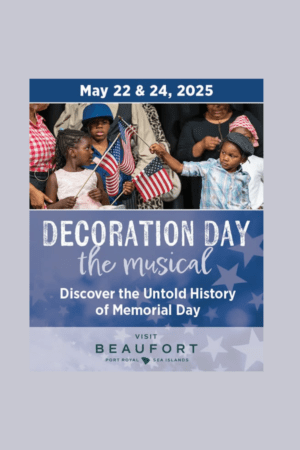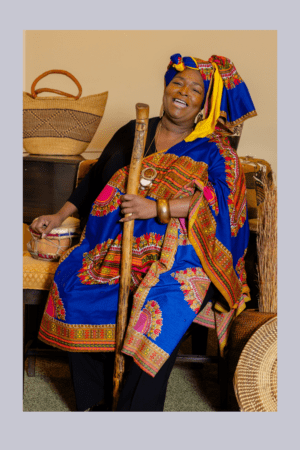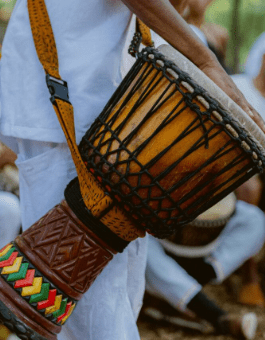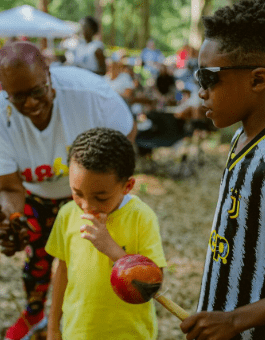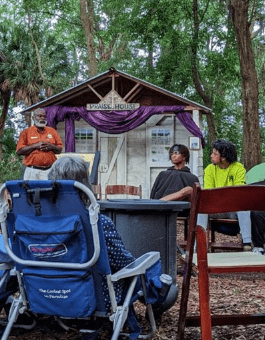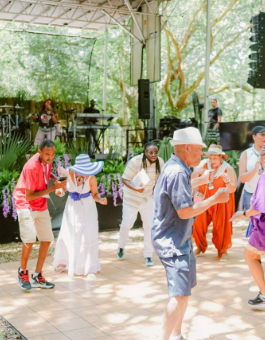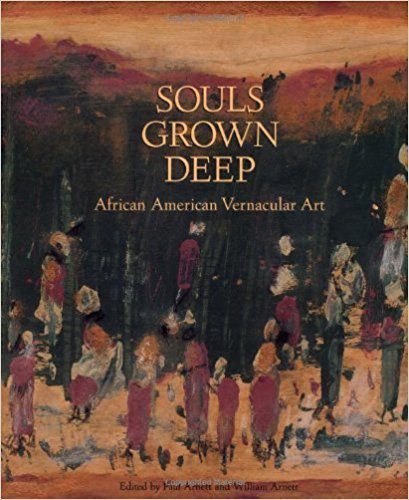
Looking to add to your art collection? Why not try getting your art fix through a new book collection. Today we have curated a list ofA�10 African American Art Books to Buy. A�If you have a love of Southern or African American Art, this list is for you. It will give you inspiration for your next art purchase and make a perfect conversation piece for your coffee table or library room. A�Send us your favorites to add to our list as well!
African American Art: Harlem Renaissance, Civil Rights Era and Beyond

A beautifully illustrated survey of African American art of the twentieth century, including many never-before-seen works by the most important artists of the period. African American Art presents a powerful selection of paintings, sculpture, prints, and photographs by forty-three black artists who explored the African American experience of the twentieth century. Embracing many universal themes and also evoking specific aspects of the African American experience such as the African diaspora, jazz, and the power of religion, the artists worked in styles as varied as documentary realism, abstraction, and postmodern assemblage of found objects. Drawn entirely from the Smithsonian American Art Museuma��s rich collection of African American art, the works include paintings by Benny Andrews, Jacob Lawrence, Thornton Dial Sr., Romare Bearden, Alma Thomas, and Lois Mailou Jones, and photographs by Roy DeCarava, Gordon Parks, Roland Freeman, Marilyn Nance, and James Van Der Zee. More than half of the artworks in the exhibition are being shown for the first time. In Richard Powella��s text, his usual keen insights into meaning and metaphor enrich the readera��s understanding of the artworks in their historical setting and contemporary culture.
African American Art and Artists
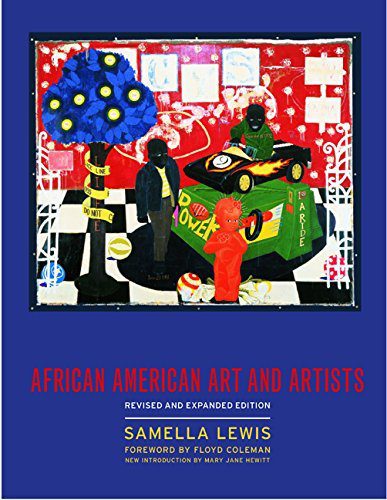 Samella Lewis has brought African American Art and Artists fully up to date in this revised and expanded edition. The book now looks at the works and lives of artists from the eighteenth century to the present, including new work in traditional media as well as in installation art, mixed media, and digital/computer art. Mary Jane Hewitt, an author, curator, and longtime friend of Samella Lewis’s, has written an introduction to the new edition. Generously and handsomely illustrated, the book continues to reveal the rich legacy of work by African American artists, whose art is now included in the permanent collections of national and international museums as well as in major private collections.
Samella Lewis has brought African American Art and Artists fully up to date in this revised and expanded edition. The book now looks at the works and lives of artists from the eighteenth century to the present, including new work in traditional media as well as in installation art, mixed media, and digital/computer art. Mary Jane Hewitt, an author, curator, and longtime friend of Samella Lewis’s, has written an introduction to the new edition. Generously and handsomely illustrated, the book continues to reveal the rich legacy of work by African American artists, whose art is now included in the permanent collections of national and international museums as well as in major private collections.
Souls Grown Deep, Vol. 1: African American Vernacular Art of the South: The Tree Gave the Dove a Leaf
 The first comprehensive overview of an important genre of American art, Souls Grown Deep explores the visual-arts genius of the black South. This first work in a multivolume study introduces 40 African-American self-taught artists, who, without significant formal training, often employ the most unpretentious and unlikely materials. Like blues and jazz artists, they create powerful statements amplifying the call for freedom and vision.
The first comprehensive overview of an important genre of American art, Souls Grown Deep explores the visual-arts genius of the black South. This first work in a multivolume study introduces 40 African-American self-taught artists, who, without significant formal training, often employ the most unpretentious and unlikely materials. Like blues and jazz artists, they create powerful statements amplifying the call for freedom and vision.
Beholding Christ and Christianity in African American Art
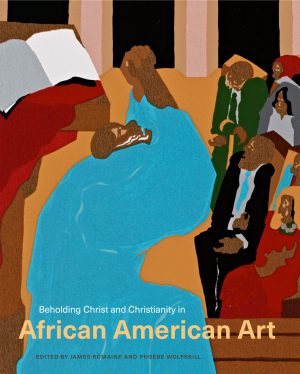
Many of the most celebrated African American artists have created works that visually manifest Christian motifs and themes, yet this component of the history of African American art is often subsumed by attention to racial identity. This volume constructs a vivid new history of African American art by exploring biblical and Christian subjects and themes in the work of such noted artists as Romare Bearden, Edmonia Lewis, Archibald Motley, Henry O. Tanner, and James VanDerZee.
Focusing on the work of artists who came to maturity between the Civil War and the Civil Rights Era, the contributors show how engaging with religious themes has served to express an array of racial, political, and socio-economic concerns for African American artists. Through a close analysis of aesthetic techniques and choices, each author considers race but does not assume it as a predominant factor. Instead, the contributors assess artworksa�� formal, iconographic, and thematic participation in the history of Christianity and the visual arts. In doing so, this collection refuses to lay a single claim on black religiosity, culture, or art, but rather explores its diversity and celebrates the complexity of African American visual expression.
African-American Art (Oxford History of Art)
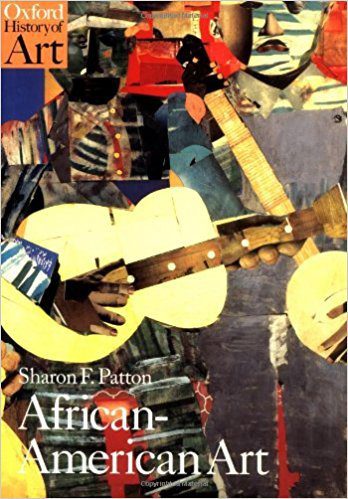
From its origins in early eighteenth century slave communities to the end of the twentieth century, African-American art has made a vital contribution to the art of the United States. African-American Art provides a major reassessment of the subject, setting the art in the context of the African-American experience. Here, Patton discusses folk and decorative arts such as ceramics, furniture, and quilts alongside fine art, sculptures, paintings, and photography during the 1800s. She also examines the New Negro Movement of the 1920s, the era of Civil Rights and Black Nationalism during the 1960s and 70s, and the emergence of new black artists and theorists in the 1980s and 90s.
New evidence suggests different ways of looking at African-American art, confirming that it represents the culture and society from which it emerges. Here, Patton explores significant issues such as the relationship of art and politics, the influence of galleries and museums, the growth of black universities, critical theory, the impact of artists collectives, and the assortment of art practices since the 1960s. African-American Art shows that in its cultural diversity and synthesis of cultures it mirrors those in American society as a whole.
African-American Art: A Visual and Cultural History
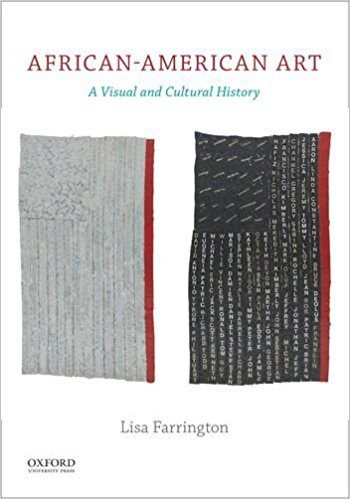 African-American Art: A Visual and Cultural History offers a current and comprehensive history that contextualizes black artists within the framework of American art as a whole. The first chronological survey covering all art forms from colonial times to the present to publish in over a decade, it explores issues of racial identity and representation in artistic expression, while also emphasizing aesthetics and visual analysis to help students develop an understanding and appreciation of African-American art that is informed but not entirely defined by racial identity. Through a carefully selected collection of creative works and accompanying analyses, the text also addresses crucial gaps in the scholarly literature, incorporating women artists from the beginning and including coverage of photography, crafts, and architecture in the nineteenth and twentieth centuries as well as twenty-first century developments. All in all, African American Art: A Visual and Cultural History offers a fresh and compelling look at the great variety of artistic expression found in the African-American community.
African-American Art: A Visual and Cultural History offers a current and comprehensive history that contextualizes black artists within the framework of American art as a whole. The first chronological survey covering all art forms from colonial times to the present to publish in over a decade, it explores issues of racial identity and representation in artistic expression, while also emphasizing aesthetics and visual analysis to help students develop an understanding and appreciation of African-American art that is informed but not entirely defined by racial identity. Through a carefully selected collection of creative works and accompanying analyses, the text also addresses crucial gaps in the scholarly literature, incorporating women artists from the beginning and including coverage of photography, crafts, and architecture in the nineteenth and twentieth centuries as well as twenty-first century developments. All in all, African American Art: A Visual and Cultural History offers a fresh and compelling look at the great variety of artistic expression found in the African-American community.
Charles White (David C. Driskell Series of African American Art)
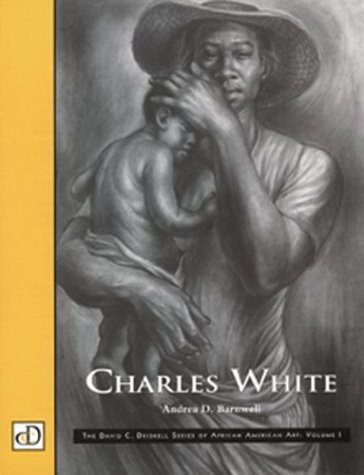
Charles White (1918-1979) is considered by some to be one of the greatest artists of the 20th century. His portrayals of African-American subjects rendered on canvas and in woodcuts, drawings, and murals convey a strong sense of dignity and social consciousness. In addition to focusing on White’s life and work, this volume presents high-quality rep
Fired Up! Ready to Go!: Finding Beauty, Demanding Equity: An African American Life in Art. The Collections of Peggy Cooper Cafritz
 After decades of art collecting, prominent Washington D.C.a��based activist, philanthropist, and founder of the august Duke Ellington School of the Arts, Peggy Cooper Cafritz had amassed one of the most important collections of work by artists of color in the country. But in 2009, the more than three hundred works that comprised this extraordinary collection were destroyed in the largest residential fire in Washington, D.C. history. The pioneering collection included art by Kara Walker, Kerry James Marshall, Mickalene Thomas, Yinka Shonibare, Nick Cave, Kehinde Wiley, Barkley L. Hendricks, Lorna Simpson, and Carrie Mae Weems, among many others.
After decades of art collecting, prominent Washington D.C.a��based activist, philanthropist, and founder of the august Duke Ellington School of the Arts, Peggy Cooper Cafritz had amassed one of the most important collections of work by artists of color in the country. But in 2009, the more than three hundred works that comprised this extraordinary collection were destroyed in the largest residential fire in Washington, D.C. history. The pioneering collection included art by Kara Walker, Kerry James Marshall, Mickalene Thomas, Yinka Shonibare, Nick Cave, Kehinde Wiley, Barkley L. Hendricks, Lorna Simpson, and Carrie Mae Weems, among many others.
Revelations: Art from the African American South

While the self-taught artists featured in this groundbreaking catalog were born in the Jim Crow period of institutionalized racism, their works embody the promise and attainment of freedom in the modern Civil Rights era and address some of the most profound and persistent issues in American society, including race, class, gender, and spirituality. Originally created as expressions of individual identity and communal solidarity, these eloquent objects are powerful testaments to the continuity and survival of African American culture. This gorgeous book features lush illustrations of works by artists such as Thornton Dial, Bessie Harvey, Purvis Young, and the Gee’s Bend quilters–including Gearldine Westbrook, Jessie T. Pettway, and more–and presents a series of insightful essays.
Testimony: Vernacular Art of the African-American South: The Ronald and June Shelp Collection
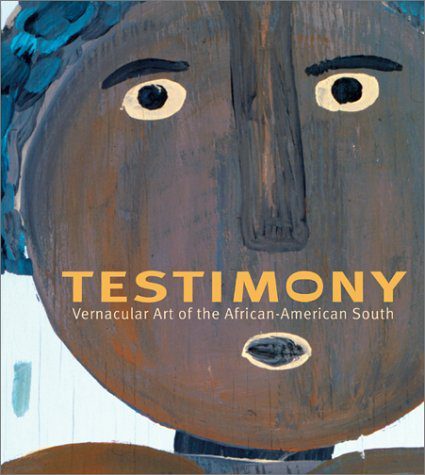
Speaking powerfully and directly to a growing audience, African-American vernacular art is making its mark in the art world. In this outstanding collection of contemporary art, works by 27 self-taught artists bear eloquent testimony to the social, cultural, and spiritual experiences of Southern African Americans.
Thornton Dial Sr., Ronald Lockett, Bessie Harvey, Mose Tolliver, and Purvis Young head a roster of leading artists in this genre. Five scholars explore the significance of these emotionally charged, culturally complex artworks and their context in the larger art world; brief biographies and the artists’ own statements are included.

